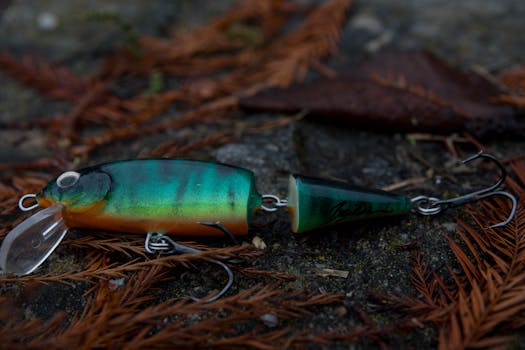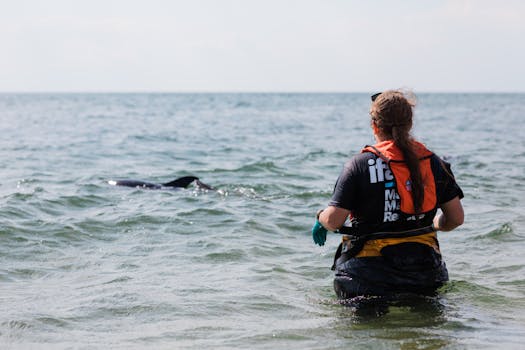Hunting has a rich history in the United States, evolving from a means of survival to a popular recreational activity. Today, the landscape of hunting has transformed significantly due to the advent of digital tools. These modern innovations are making the hunt more efficient, safer, and enjoyable for enthusiasts.
As technology continues to advance, hunters are embracing various digital tools to enhance their experiences. From smartphones to specialized software, these resources help in tracking, planning, and executing successful hunts. Furthermore, these tools contribute to better wildlife management, enhancing sustainability in the practice.
Understanding the impact of these digital tools on hunting not only highlights the benefits they offer but also sheds light on new ethical considerations. Efficient hunting practices are essential as they relate to wildlife conservation and habitat preservation.
The Role of Mobile Applications in Hunting
Mobile applications have played a pivotal role in how hunters prepare and execute their plans. With numerous apps available, hunters have access to a wealth of information at their fingertips. These applications offer features like GPS mapping, weather forecasts, and real-time updates.
Additionally, many mobile apps are designed to help hunters log their activities. This includes tracking their locations, documenting species harvested, and sharing experiences with friends. This not only enhances the social aspect of hunting but also improves record-keeping practices.
Moreover, apps can provide notifications on hunting regulations and season dates. Staying informed about these guidelines is essential for ethical hunting. Such features help ensure compliance with local laws, promoting responsible hunting.
Lastly, there are also apps that utilize augmented reality to improve the hunting experience. This innovative technology allows hunters to visualize animal behavior patterns and landscapes in a three-dimensional space. Such advancements can significantly enhance planning and execution.
In summary, mobile applications have become indispensable tools for the modern hunter. They bring enhanced convenience, efficiency, and a greater appreciation for the hunting experience while ensuring ethical practices.
GPS Technology and Its Benefits
GPS technology has revolutionized navigation for hunters. Gone are the days of bulky maps and compasses, as modern devices provide precise location tracking. This advancement minimises the chances of getting lost in unfamiliar terrains.
Using GPS devices, hunters can mark waypoints for significant locations such as stands or trails. This feature allows for better planning, ensuring hunters can efficiently retrace their paths. Consequently, efficiency is heightened, leading to more successful hunts.
Moreover, some GPS devices incorporate topographic maps, showing elevation changes and potential hunting spots. Additionally, many devices provide accurate distance measurements for specific shots. Understanding these factors can enhance shooting accuracy.
Furthermore, GPS technology enables hunters to share locations and coordinates with their peers easily. This collaborative aspect strengthens the hunting community, fostering a sense of camaraderie among hunters.
In conclusion, GPS technology enhances navigation, safety, and communication for hunting enthusiasts. The introduction of these tools significantly improves all aspects of the hunting experience while ensuring ethical considerations.
Trail Cameras as Essential Tools
Trail cameras have become an essential tool for hunters looking to gain insights into wildlife behavior. These devices capture images of animals in their natural environment, providing valuable data. Using such information, hunters can identify patterns in movement and feeding.
The use of trail cameras helps in scouting potential hunting locations. By analyzing the activity captured on cameras, hunters can maximize their time spent in the field. This maximizes efficiency and effectiveness during the actual hunt.
Moreover, trail cameras can help to monitor the health and population dynamics of wildlife. By observing species trends, hunters can engage in more sustainable practices. This data ultimately supports effective wildlife management.
Additionally, many modern trail cameras offer smart features, including cellular connectivity. This allows hunters to receive images and alerts directly on their smartphones. This convenience ensures timely decision-making while in the field.
Ultimately, trail cameras contribute significantly to the modern hunting experience. They provide valuable insights, foster sustainable practices, and enhance the efficiency of hunting trips.
Online Hunting Communities and Social Media
Online hunting communities and social media platforms have given rise to a new way of connecting for hunters. Today’s hunters can share their experiences, tips, and advice through various online platforms. This interconnectedness nurtures a sense of community among enthusiasts.
Moreover, these digital spaces allow for the sharing of resources such as articles and instructional videos. Such content provides invaluable guidance, enriching the knowledge base of both novice and experienced hunters. Learning from others’ experiences fosters skill development.
Additionally, social media allows hunters to showcase their successes and conservation efforts. Highlighting ethical practices encourages others to adopt similar values. This visibility promotes accountability within the hunting community.
However, this increased connectivity also comes with challenges, such as the spread of misinformation. It’s essential for hunters to verify the accuracy of information before sharing it. Maintaining respect for wildlife and habitats is crucial for responsible hunting.
In summary, online communities and social media have transformed how hunters connect and share knowledge. While offering numerous benefits, they also necessitate responsibility in communication and information dissemination.
Drone Technology in Hunting
Drones are emerging as a game-changing technology for hunters. These aerial devices provide unique perspectives of hunting areas, allowing for extensive scouting. Drones can cover vast terrains quickly, offering real-time visuals.
Utilizing drones can assist hunters in locating wildlife or identifying terrains suitable for hunting. This aerial view provides insights that ground scouting can often miss. Consequently, hunters can plan their strategies more effectively.
Moreover, drones equipped with thermal imaging can identify heat signatures. This feature allows for locating animals obscured by foliage or other natural barriers. Such capabilities can drastically increase the chances of a successful hunt.
However, the use of drones in hunting raises ethical considerations. Regulations about drone usage vary, and it’s important for hunters to stay informed. Respecting the privacy of wildlife and adhering to guidelines is vital.
In conclusion, drones offer unprecedented opportunities to enhance hunting experiences. While they can improve efficiency, ethical considerations must be prioritized to maintain integrity in the sport.
The Importance of Digital Safety Tools
Digital safety tools play a crucial role in ensuring the well-being of hunters in the field. These tools assist in managing risks associated with outdoor activities. Successful hunting requires a keen awareness of environmental hazards.
Apps designed for safety can provide essential features such as location tracking, emergency contacts, and weather updates. These features can be lifesaving, especially in emergencies. Moreover, they enhance overall awareness during hunting trips.
In addition, digital safety tools can also include first-aid guides, ensuring hunters are prepared for injuries. Understanding common injuries and appropriate responses promotes a culture of safety among hunters. This education is vital for ensuring safe practices.
Furthermore, many hunting devices come equipped with built-in safety features. From ensuring stable weapon handling to incorporating emergency alerts, these devices prioritize hunter safety. This integration fosters a culture of responsible hunting.
In summary, incorporating digital safety tools enhances the overall experience of hunters. By addressing risks and ensuring preparedness, these tools play a pivotal role in a safe hunting environment.
Conclusion
The impact of digital tools on hunting is profound, changing the way enthusiasts engage with the sport. From mobile applications to trail cameras, each tool enriches the overall experience.
Additionally, technologies such as GPS and drones offer tremendous advantages in efficiency and decision-making. However, these advancements also stress the importance of ethical practices and responsible use.
Community engagement through social media further strengthens the hunting network, although it necessitates careful information sharing. Overall, the evolution of hunting tools emphasizes the blend of tradition and innovation.
Ultimately, embracing these digital tools prepares hunters for more successful and responsible experiences in the field. As technology continues to evolve, it promises exciting prospects for the future of hunting.
In conclusion, the thoughtful integration of digital tools into hunting not only enhances efficiency but also fosters a greater appreciation for wildlife conservation. Each tool holds the potential to shape the future of hunting positively.


